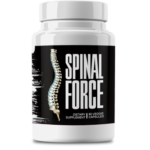This Village-Made Chinese Pain Reliever Eliminates Back And Joint Pain!
How to Choose the Best Joint Relief for Your Lifestyle

Getting a Grip on Joint Pain and Finding the Best Relief
Joint pain is something many of us know all too well. It affects millions around the globe, making even the simplest daily tasks a struggle. Whether your joints are sore from getting older, an injury, or a chronic condition, finding the right relief is key to staying active and living well. In this guide, we'll dive into what causes joint pain, how to spot when you need relief, and explore solutions that fit your lifestyle.
What Causes Joint Pain?
Joint pain can hit you from all angles, and understanding why is the first step to feeling better. Common causes include osteoarthritis, rheumatoid arthritis, bursitis, gout, and various injuries like strains and sprains. Knowing the root of your pain helps in picking the best relief. For example, while osteoarthritis is due to wear and tear, rheumatoid arthritis is an autoimmune issue—each needs its own treatment game plan.
Signs You Need Joint Relief
Spotting the symptoms that scream "I need relief!" is crucial. Look out for ongoing pain, swelling, stiffness, redness, and difficulties moving. Ignoring these can make things worse, eventually affecting how you handle everyday tasks.
What Happens if You Ignore Joint Pain?
Brushing off joint pain can lead to bigger problems down the road. Chronic pain might weaken muscles, cause joint deformities, and limit mobility, all of which can cramp your lifestyle. Plus, untreated pain can take a toll on your mental health, leading to anxiety or depression. That's why it's important to tackle it head-on and find the best relief for long-term wellness.
Finding the Best Joint Relief for Your Lifestyle
Picking the right joint relief means knowing your lifestyle and health needs inside out. Here, we'll help you assess your daily activities, understand your health conditions, and get professional advice to find the relief that works best for you.
Check Your Daily Routine and Joint Stress
Your everyday hustle can dictate how you approach joint relief. Think about the physical demands of your job, hobbies, or workouts. High-impact activities might need stronger joint support, while a more sedentary lifestyle might benefit from mobility exercises and tweaking your ergonomics.
Understand Your Health and Joint Needs
Your personal health plays a big role in choosing joint relief. Conditions like diabetes, obesity, and heart disease can make joint problems worse. Tailoring your relief strategy to these health factors ensures more effective and lasting results.
Get Expert Help for Tailored Advice
Talking to healthcare pros like rheumatologists or physiotherapists can give you the personalized advice you need. They can guide you on the best treatments, whether it's meds, therapy, or lifestyle tweaks, so you get the best relief possible.
Exploring Different Joint Relief Solutions
From meds to natural remedies, the market is packed with joint relief options. Knowing your choices helps you decide what fits your lifestyle and preferences best.
Over-the-Counter Medications
OTC meds like NSAIDs (think ibuprofen) are popular for tackling joint pain. They cut down inflammation and ease pain but remember to follow the directions to dodge side effects.
Natural Remedies and Supplements
If you're leaning towards natural options, supplements like turmeric, glucosamine, and chondroitin are often used for joint health. They can support cartilage and reduce inflammation. Always check with a healthcare provider to make sure they're safe for you.
Lifestyle Changes and Exercises
Lifestyle tweaks and exercises are proactive ways to find relief. Low-impact exercises like swimming, biking, and yoga improve flexibility and strength without stressing your joints. Managing your weight and making ergonomic changes can also help ease joint tension.
The Role of Diet in Joint Relief
Your diet is a heavyweight in joint health, influencing inflammation and overall joint function. Let's look at how tweaking what you eat can lead to better joint relief.
Eat Anti-inflammatory Foods
Add anti-inflammatory foods to your diet for a joint-friendly boost. Omega-3-rich foods like salmon and walnuts, along with leafy greens and berries, can help keep inflammation and pain at bay.
Avoid Foods That Fuel Inflammation
On the flip side, some foods can make inflammation worse. Steer clear of processed foods, too much sugar, and trans fats to help cut down on joint pain and swelling. A balanced diet full of whole foods supports your joints overall.
Essential Supplements for Joint Health
Nutrients like vitamin D, calcium, and omega-3s are essential for healthy joints. Supplements can fill nutritional gaps, ensuring your body has what it needs for optimal joint function and relief.
Comparing Joint Relief Products
With so many products out there, knowing their differences can help you pick the ones that best meet your joint relief needs.
Top Joint Relief Creams and Gels
Creams and gels offer targeted relief, often containing ingredients like menthol or capsaicin. Topical NSAIDs provide localized relief with fewer whole-body side effects, making them a favorite for many.
Joint Relief Pills and Supplements
Oral supplements like glucosamine and chondroitin are popular for joint health. They can help rebuild cartilage and reduce inflammation over time, providing a longer-term solution.
Innovative Joint Relief Devices
Devices like knee braces or ergonomic cushions can offer extra support and ease joint stress during daily activities. They're especially helpful for those dealing with chronic joint conditions or recovering from injury.
Tips for Making Joint Relief Part of Your Routine
Incorporating joint relief into your daily life takes consistency and flexibility. Here are some tips to help you make it happen.
Balance Your Routine for Joint Health
Creating a routine that balances rest, exercise, and joint care is crucial. Regularly include stretching and strengthening exercises, and make sure to rest enough to prevent overuse injuries.
Stay Consistent with Your Practices
Consistency is key to getting the best joint relief. Regularly use creams, take your supplements, and maintain a balanced diet for the best results. Set reminders or make these habits part of your daily routine to stick with them.
Track Progress and Adjust as Needed
Keep an eye on your joint health progress and be ready to tweak your strategies when necessary. If something isn't working, consult a healthcare professional to explore other options or adjust your approach.
Real-life Success Stories: Discovering Joint Relief
Hearing from those who've successfully managed joint pain can be both inspiring and educational. Here are some real-life stories of people who found relief through different methods.
Testimonials from Those Who Found Relief
Jane, a 65-year-old retiree, found comfort through yoga and dietary changes. By adding anti-inflammatory foods and regular exercise into her routine, she significantly eased her knee pain without relying heavily on meds.
Lessons from Joint Relief Journeys
Every journey to relief is unique, with lessons learned along the way. Many stress the importance of patience, persistence, and being open to trying various approaches to discover what works best.
Expert Tips for Long-term Joint Health
Experts suggest regular check-ups and staying proactive about joint health. Early intervention, coupled with a balanced approach of diet, exercise, and suitable treatments, is key to preventing future issues and maintaining long-term health.
Wrapping Up
Main Takeaways
Finding the best joint relief means understanding your specific needs, exploring different solutions, and keeping a balanced approach. By making dietary changes, adjusting your lifestyle, and consulting with healthcare professionals, you can significantly boost your joint health and quality of life.
Final Thoughts
Don't let joint pain run your life. By taking a proactive and informed approach, you can find relief that's tailored to your lifestyle, helping you stay active and healthy for years to come. Got any tips or experiences to share? We'd love to hear from you in the comments below!








